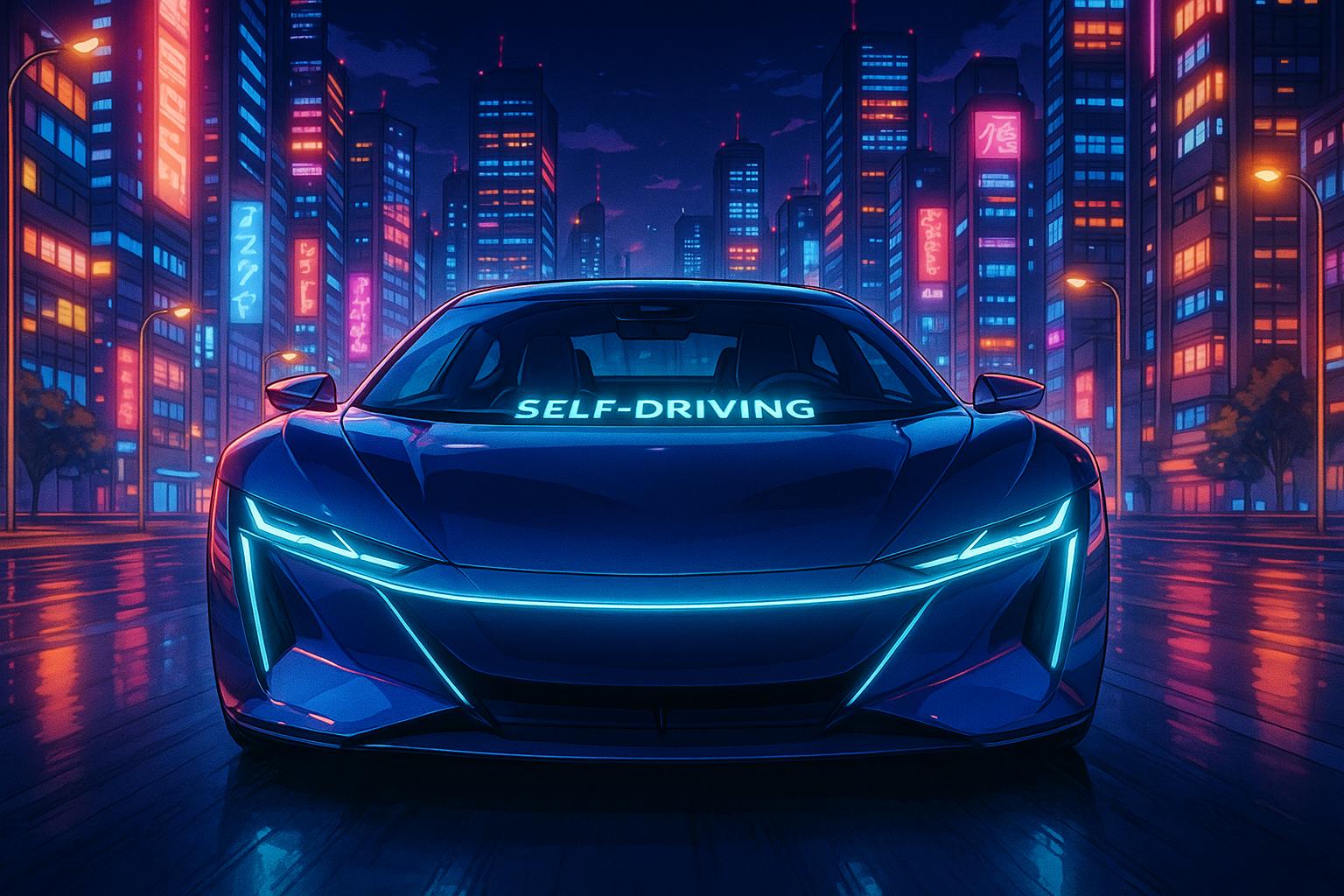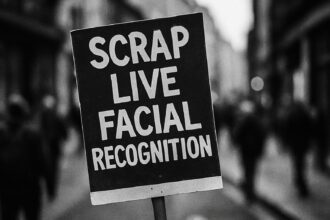While autonomous vehicles make significant technological advances and aim for wider adoption, safety incidents and regulatory challenges highlight the fragile trust underpinning their future in mainstream transport.
Self-driving cars have long been a topic of fascination and debate, with promises of transforming transportation by eliminating human error. In an exploration of this evolving landscape, David Pogue surveys current developments in autonomous vehicles, delving into systems like Tesla’s Autopilot and Lyft’s self-driving taxis. This future, once seen as a distant ambition, is closer than ever as companies strive to enhance both technology and public trust in these innovations.
The rapid advancement of autonomous driving technology is underscored by significant strides made by industry leaders. Companies such as Waymo and Tesla, alongside emerging challengers like Pony AI and WeRide, are working to establish their foothold beyond traditional markets. Recent reports indicate that the cost of robotaxi models is projected to decrease to $50,000 or lower, making them more accessible. As generative AI plays a pivotal role in the development process, the industry’s ability to reduce operational costs by decreasing the need for remote human intervention is a promising advancement. Analysts predict that firms like WeRide and Pony AI could break into profitability by the late 2020s, contingent upon overcoming regulatory hurdles and ensuring public safety.
However, the path to wide adoption is fraught with challenges. Recent accidents involving autonomous vehicles, such as incidents with Cruise’s fleet that led to a temporary suspension, highlight the safety concerns that continue to plague the industry. Experts emphasise that rebuilding public trust necessitates transparency about the capabilities and limitations of such technologies. The autonomous vehicle sector is grappling with the overall need for improved safety records and clear communication strategies to foster acceptance among potential users. Waymo, for instance, has adopted a cautious approach to its operations, prioritising safety over rapid deployment. Co-CEO Tekedra Mawakana noted that enhanced safety is essential, especially given the high annual rate of road fatalities in the United States.
While Waymo has expanded its operational zones significantly—now covering areas in Phoenix, Los Angeles, and Austin—it faces scrutiny related to safety and public perception. The company maintains that its robotaxi service is markedly safer than conventional vehicles, referencing a notable decline in injury crashes over extensive testing miles. Yet, they continue to confront public concerns stemming from operational issues, such as inconsistent stopping protocols and ongoing federal investigations into traffic violations.
In stark contrast, General Motors’ Cruise has found itself in peril as operational setbacks led to a substantial recall and a shutdown of its self-driving division. Following multiple incidents of pedestrian collisions and an investigation from the National Highway Traffic Safety Administration, GM terminated its ambitious plans for the Cruise robotaxi service after significant investment over several years. Such events underscore the need for rigorous safety protocols and comprehensive testing before these technologies can be deemed ready for broader public use.
As the U.S. Department of Justice deepens its investigations into Tesla, sprawling inquiries have emerged concerning the company’s Autopilot and Full Self-Driving features. These investigations could impact Tesla’s reputation, casting a shadow over its promise as a leader in autonomous vehicle technology. Legal experts warn that scrutiny around vehicle functionality and corporate governance could significantly hinder Tesla’s ambitions.
As self-driving cars inch closer to becoming a staple of mainstream transportation, their successful integration hinges on addressing ongoing safety concerns, maintaining public trust, and navigating regulatory landscapes. The balance between innovation and responsibility will determine the future trajectory of autonomous vehicles, underscoring the critical role of transparency and safety in gaining public confidence.
 Reference Map:
Reference Map:
- Paragraph 1 – [1], [4]
- Paragraph 2 – [2], [5]
- Paragraph 3 – [3], [6]
- Paragraph 4 – [5], [6]
- Paragraph 5 – [2], [3]
Source: Noah Wire Services
- https://www.cbsnews.com/video/self-driving-cars-2019/ – Please view link – unable to able to access data
- https://www.reuters.com/breakingviews/robotaxis-go-hype-maybe-possibly-profit-2025-06-04/ – This article discusses the progress of robotaxis, highlighting technological advancements, declining vehicle costs, and global adoption. Companies like Waymo and Tesla, along with rivals such as Pony AI and WeRide, are expanding their autonomous ride services beyond early U.S. and Chinese markets, including efforts in Japan and the UAE. Cost reduction is a key factor; future robotaxi models could drop to $50,000 or even lower. Generative AI enables faster training and adaptability, while the need for fewer remote human monitors helps manage operational expenses. Analysts anticipate companies like WeRide and Pony AI turning profits by 2027 and 2029, respectively. However, challenges remain, including safety oversight, regulatory uncertainty, public trust, and international political tensions, particularly affecting Chinese firms. Integration with ride-hailing platforms like Uber introduces additional costs, and a major accident could stall progress. Despite obstacles, with better economics and scalable technology, the robotaxi industry is inching closer to becoming a mainstream and profitable transportation alternative.
- https://www.axios.com/2023/11/27/self-driving-cars-robotaxis-trust – This article examines the challenges in building public trust for self-driving cars amid safety concerns. It emphasizes the need for better transparency and tighter regulations, especially following incidents like the suspension of Cruise’s U.S. fleet after an accident. While companies like Waymo adopt a slower but safer approach, experts highlight that cutting corners in technology readiness can lead to significant setbacks. Building public trust requires transparency about the capabilities and limitations of autonomous vehicles (AVs). The AV industry faces a broader challenge of gaining acceptance, and improved safety records through clear communication and responsible scaling are crucial for achieving this. Despite the potential for safer and more accessible transportation, public understanding and trust in the technology need to be fostered carefully.
- https://time.com/6978951/waymo/ – This article details Waymo’s expansion in autonomous driving technology, including the doubling of its operating area in Phoenix in 2023, creating the largest fully autonomous service zone. By 2024, the service extended to Los Angeles, covering areas from Santa Monica to downtown, although highways remain off-limits. Passengers can hail these autonomous vehicles using Waymo’s app. Despite facing protests over the vehicles’ unexpected stops and being under federal investigation for crashes and potential traffic violations, Waymo maintains that its robotaxis are significantly safer than traditional vehicles. They cite a substantial reduction in injury crashes within the first 7 million miles. Co-CEO Tekedra Mawakana highlights the need for improved road safety, given the high number of annual road crash fatalities in the U.S. Waymo plans to launch its app in Austin by 2025.
- https://www.reuters.com/business/autos-transportation/us-closes-probe-into-gm-cruise-self-driving-vehicles-over-pedestrian-risks-2025-01-15/ – This article reports on the closure of a U.S. auto safety investigation into General Motors’ self-driving unit, Cruise, regarding pedestrian risks. The probe, initiated in October 2023, followed five incidents where Cruise vehicles collided with pedestrians, resulting in injuries in three cases. The National Highway Traffic Safety Administration (NHTSA) had concerns about Cruise vehicles driving near pedestrians on crosswalks. The investigation concluded after GM recalled the vehicles in November 2023 and decided to cease Cruise operations. GM terminated its Cruise business in December, stopping work on self-driving robotaxis after investing over $10 billion since 2016. Additionally, Cruise paid a $500,000 fine for submitting false information about an October 2023 crash. GM’s halted plans included developing a robotaxi without human controls and deploying 2,500 self-driving Origin vehicles annually.
- https://apnews.com/article/29a68864f75c9fabbd04f7a87d169444 – This article discusses the expansion of the U.S. Department of Justice’s investigations into Tesla beyond issues related to its ‘Autopilot’ and ‘Full Self-Driving’ systems. Federal prosecutors have issued subpoenas requesting information on personal benefits, related parties, vehicle range, and personnel decisions. Legal experts suggest these additional topics indicate the possibility that Tesla’s CEO Elon Musk and the company’s representations about vehicle features might be under scrutiny. This development signals a broader inquiry, which could damage Tesla’s brand and have significant implications for its business operations and finances. The National Highway Traffic Safety Administration has been investigating Tesla’s automated driving systems since 2016, following multiple crashes, including fatalities.
- https://www.mysanantonio.com/business/article/austin-self-driving-taxis-18279096.php – This article announces that Waymo, Alphabet’s autonomous driving technology company, will launch its robotaxi service in Austin, Texas, in the fall of 2023. Austin becomes the fourth major city to receive Waymo’s robotaxis, joining Phoenix, Los Angeles, and San Francisco. The program will begin with public rides, including fully autonomous deployment, in the ensuing months. Waymo’s cars will operate in a large portion of the city, including neighborhoods like Downtown Austin, Barton Hills, Riverside, East Austin, and Hyde Park. Saswat Panigrahi, chief product officer at Waymo, highlights the adaptability of the Waymo Driver to Austin’s complex cityscape and the potential benefits of autonomous vehicles in making transportation safer, greener, and more accessible.
Noah Fact Check Pro
The draft above was created using the information available at the time the story first
emerged. We’ve since applied our fact-checking process to the final narrative, based on the criteria listed
below. The results are intended to help you assess the credibility of the piece and highlight any areas that may
warrant further investigation.
Freshness check
Score:
2
Notes:
 The narrative is based on a 2019 CBS News video, indicating that the content is over six years old. The earliest known publication date of substantially similar content is 2019. The report is a direct video presentation, suggesting it is not based on a press release. The content has been republished across various platforms, including CBS News and CBS Los Angeles, indicating widespread dissemination. The narrative includes outdated information, such as projections for self-driving vehicles in 2019, which have since been surpassed.
The narrative is based on a 2019 CBS News video, indicating that the content is over six years old. The earliest known publication date of substantially similar content is 2019. The report is a direct video presentation, suggesting it is not based on a press release. The content has been republished across various platforms, including CBS News and CBS Los Angeles, indicating widespread dissemination. The narrative includes outdated information, such as projections for self-driving vehicles in 2019, which have since been surpassed.
Quotes check
Score:
3
Notes:
 The video features interviews with industry experts discussing the future of self-driving cars. The earliest known usage of similar quotes is from 2019, as evidenced by the CBS News video. Identical quotes appear in earlier material, indicating potential reuse of content. The wording of the quotes varies slightly across different platforms, suggesting some adaptation or paraphrasing.
The video features interviews with industry experts discussing the future of self-driving cars. The earliest known usage of similar quotes is from 2019, as evidenced by the CBS News video. Identical quotes appear in earlier material, indicating potential reuse of content. The wording of the quotes varies slightly across different platforms, suggesting some adaptation or paraphrasing.
Source reliability
Score:
8
Notes:
 The narrative originates from CBS News, a reputable organisation known for its journalistic standards. The video features interviews with industry experts, lending credibility to the content.
The narrative originates from CBS News, a reputable organisation known for its journalistic standards. The video features interviews with industry experts, lending credibility to the content.
Plausability check
Score:
4
Notes:
 The narrative discusses projections for self-driving vehicles in 2019, which have since been surpassed, indicating outdated information. The content lacks supporting detail from other reputable outlets, as it is a standalone video report. The report lacks specific factual anchors, such as names, institutions, or dates, making it difficult to verify certain claims. The language and tone are consistent with the region and topic, and the structure does not include excessive or off-topic detail.
The narrative discusses projections for self-driving vehicles in 2019, which have since been surpassed, indicating outdated information. The content lacks supporting detail from other reputable outlets, as it is a standalone video report. The report lacks specific factual anchors, such as names, institutions, or dates, making it difficult to verify certain claims. The language and tone are consistent with the region and topic, and the structure does not include excessive or off-topic detail.
Overall assessment
Verdict (FAIL, OPEN, PASS): FAIL
Confidence (LOW, MEDIUM, HIGH): HIGH
Summary:
 The narrative is based on a 2019 CBS News video, indicating that the content is over six years old. The earliest known publication date of substantially similar content is 2019. The report is a direct video presentation, suggesting it is not based on a press release. The content has been republished across various platforms, including CBS News and CBS Los Angeles, indicating widespread dissemination. The narrative includes outdated information, such as projections for self-driving vehicles in 2019, which have since been surpassed. The video features interviews with industry experts discussing the future of self-driving cars. The earliest known usage of similar quotes is from 2019, as evidenced by the CBS News video. Identical quotes appear in earlier material, indicating potential reuse of content. The wording of the quotes varies slightly across different platforms, suggesting some adaptation or paraphrasing. The narrative originates from CBS News, a reputable organisation known for its journalistic standards. The video features interviews with industry experts, lending credibility to the content. The narrative discusses projections for self-driving vehicles in 2019, which have since been surpassed, indicating outdated information. The content lacks supporting detail from other reputable outlets, as it is a standalone video report. The report lacks specific factual anchors, such as names, institutions, or dates, making it difficult to verify certain claims. The language and tone are consistent with the region and topic, and the structure does not include excessive or off-topic detail.
The narrative is based on a 2019 CBS News video, indicating that the content is over six years old. The earliest known publication date of substantially similar content is 2019. The report is a direct video presentation, suggesting it is not based on a press release. The content has been republished across various platforms, including CBS News and CBS Los Angeles, indicating widespread dissemination. The narrative includes outdated information, such as projections for self-driving vehicles in 2019, which have since been surpassed. The video features interviews with industry experts discussing the future of self-driving cars. The earliest known usage of similar quotes is from 2019, as evidenced by the CBS News video. Identical quotes appear in earlier material, indicating potential reuse of content. The wording of the quotes varies slightly across different platforms, suggesting some adaptation or paraphrasing. The narrative originates from CBS News, a reputable organisation known for its journalistic standards. The video features interviews with industry experts, lending credibility to the content. The narrative discusses projections for self-driving vehicles in 2019, which have since been surpassed, indicating outdated information. The content lacks supporting detail from other reputable outlets, as it is a standalone video report. The report lacks specific factual anchors, such as names, institutions, or dates, making it difficult to verify certain claims. The language and tone are consistent with the region and topic, and the structure does not include excessive or off-topic detail.













